MYP Design Cycle – Getting Started
In July 2015, I introduced my sixth-grade students to their first design unit: engineering a water tank from newspaper. Middle school design teachers and colleagues Jessie M. and Angie U. created the first version of the unit. This hands-on challenge served as an engaging introduction to the MYP Design Cycle and emphasized problem-solving through an accessible and inexpensive paper STEM challenge project.

Initially created by my colleagues Jessie M. and Angie U., the project simplified the MYP Design Cycle for middle school students, transforming abstract problem-solving concepts into hands-on learning. The project spanned a quarter of the school year, which felt lengthy for a single activity. I was concerned about keeping 11- and 12-year-olds engaged and focused throughout.
Balancing Depth and Engagement in Paper STEM Projects
I initially expected rapid prototyping and shorter timelines, as most paper STEM activities are quick and straightforward. However, the extended project duration provided opportunities for deeper exploration and refinement, allowing students to fully engage with the four stages of the MYP Design Cycle: inquiring, developing, creating, and evaluating.
Managing materials was simple and cost-effective. Newspaper, PopsicleTM sticks, and tape were both sustainable and scalable, ensuring accessibility for all students. This simplicity was essential for the more than half of the class who spoke a language other than English at home. Using basic materials leveled the playing field, fostering inclusivity and encouraging creativity.

MYP Design Cycle (slightly modified in Developing Ideas for Year 1)
Image Credit: http://anwatindesign.weebly.com/
After completing the unit for the first time, I realized I had developed a new appreciation for the structured guidance and dependable framework provided by the four-part MYP Design Cycle.
Shifting Expectations for Paper STEM Challenges
Throughout teaching the unit to more than 300 students, I realized the value of focusing on foundational skills. Rather than merely building a water tank, students practiced comprehensive problem-solving, from analyzing requirements to iterating on their designs. These skills directly supported their success in future MYP Design projects, solidifying their ability to tackle increasingly complex challenges.
The thinking behind this approach was simple yet effective: A solid foundation in problem-solving and critical thinking would set students up for success throughout their four years in MYP Design.
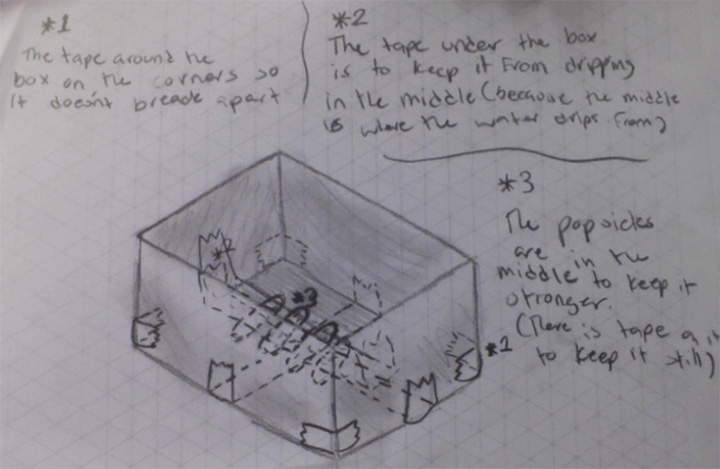
Connections to Standards
In terms of more traditional learning goals, it can be both a pro and a con that straightforward and easy STEM activities for middle school students such as water tank engineering from newspaper connect naturally with standards and instructional techniques found in NGSS, ISTE, CCSS (English Language Arts Standards for Science & Technical Subjects), Visible Thinking Routines, and Research-Based Instructional Strategies.
For example, one pro is the rich math connection with engineering where concepts can come to life: Analyzing the ratio of milliliters of water held per gram of material used for all tanks connects neatly with the 6th Grade Common Core Math Standard Ratios & Proportional Relationships. When multiple tanks are tested and the data captured and analyzed, the Common Core Standard of Statistics & Probability can certainly come to life for students!

Another pro is the straightforward science connection. The NGSS Cross-cutting Concepts of Cause and Effect and Systems and System Models could be supported and explored.
I developed the unit–especially the evaluation part–from a somewhat subjective observation of the tank holding water during testing. A more scientific approach was needed to gather and analyze data. Students were encouraged to be mindful of the tank’s mass in their planning and worked to control variables during testing. They precisely measured the water put into the tank and the water that came out.
The cons related to standards can come about due to the abundance of choice. The many rich connections in the teaching and learning mix can produce a bunch of questions for teachers that may need sorting out: What standards should be used? In what order should standards be assessed and how should they be weighed? Can the standards be easily assessed within the MYP Design Cycle? To what extent can the MYP Design Cycle fulfill both a sequencing role and a scope/standards role in problem-solving? Honestly, even after four years, I felt like I was just beginning to dig deeper into connecting my students’ design learning experience to standards.
A Performance Task Scenario
The water tank engineering lesson plan benefited students by framing the problem within a scenario to create a more genuine experience. How? The Wiggins’ and McTighe’s GRASPS model guided student learning to provide a meaningful context to engineer the tank designs.
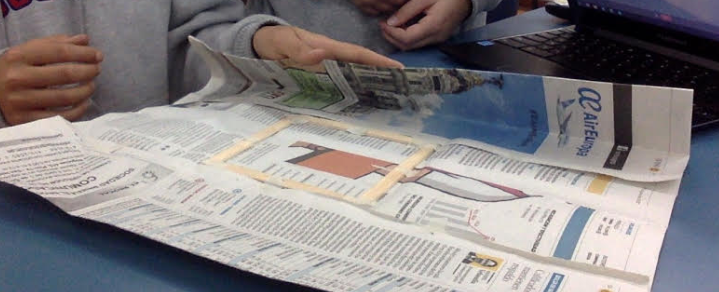
GRASPS stands for Goal, Role, Audience, Situation, Product, and Standards & Criteria for Success. The GRASPS scenario set the design problem-solving stage by outlining an authentic performance task for students.
Students found themselves in the following GRASPS scenario (written in the second person) to prepare for water tank engineering from newspaper:
Goal
Your goal is to design a water tank from a minimum amount of newspaper, Popsicle™ sticks, and tape to hold 200 mL of water for three minutes.
Role
You are a recently hired engineer in a construction company. Your training requires that you solve problems in an efficient manner with limited resources.
Audience
Your supervisor at the construction company will evaluate how well you addressed the problem, researched and developed ideas, decided on a solution, gathered data while testing your tank, and reflected on your learning.
Situation
Your newspaper water tank design will be developed, built, and tested by you and other “trainees” at your table. Reporting out will be done by you alone through writing and sketching. Your team’s materials are limited to:
- 1 sheet of newspaper (57.5 x 44 cm, 12.1 g)
- 4 wooden Popsicle™ sticks (4.4 g)
- 80 cm of masking tape (1.5 g)
Maximum Total Mass = 18 g
Product/Performance and Purpose
The product is a water tank of minimum mass made from newspaper, Popsicle™ sticks, and/or masking tape that holds as much water as possible for three minutes (200 mL will be used).

Standards & Criteria for Success
• The tank shall stand on its own on a flat horizontal surface. It shall not be supported by anything other than the approved materials. It cannot be taped to any surface.
• The tank shall hold as much of the 200 mL of water as possible for three minutes. After three minutes, the water in the tank shall be poured out and measured by the supervisor.
• Success will be determined mathematically: The amount of water held after three minutes divided by the mass of the materials used. The higher the quotient, the greater the success (i.e., the more efficient the tank).
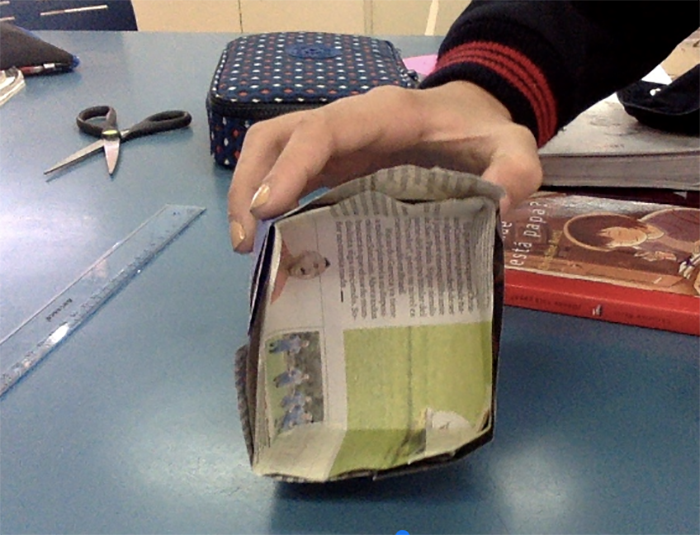
I’m not fully satisfied with how I wrote the Standards & Criteria for Success. They could be more concise and precise. Ideally, the Standards & Criteria for Success should include a few essential, non-negotiable design specifications that align closely with Criterion B. Improving the connection between GRASP and Criterion B was also an area I needed to address to enhance my students’ learning.
Statement of Inquiry
Broader than the GRASPS, the statement of inquiry was also introduced at the beginning of the unit. It established connections to significant and enduring concepts, principles, or theories. In the case of engineering a paper water tank, the idea of tradeoffs came into play as “Engineers must use finite resources responsibly to design structures efficiently.” We dug into knowing what this meant through a series of factual, conceptual, and debatable questions. For a deeper look into getting started with an MYP Design unit, check out the post, MYP Design Criterion A – Inquiring and Analyzing.
Design Trade-offs with Newspaper STEM Activities
For some students, the concept of trade-offs emerged naturally as their investigation deepened into engineering a newspaper water tank to be of minimal mass and strong when wet.
However, many students seemed to assume they should use all the materials. A common tendency was to associate a successful tank with greater mass. Adding mass to a tank was achieved through thicker walls or bases and using all of the Popsicle™ sticks. Unfortunately, many students tended to overlook the other side of the trade-off equation–the benefits of lower mass.I believe that the thinking went something like this:
more material =>
stronger tank =>
more water held after three minutes =>
Success!
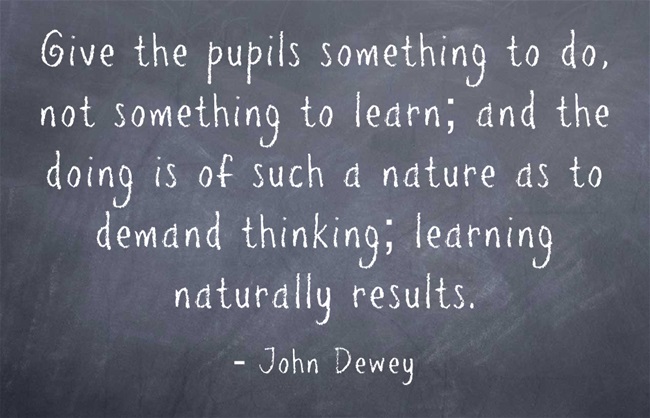
In spite of my desire for students to better understand the nature of the ratio-based success criteria before their official tank build, I did not show each previous year’s tanks with their respective scores. I felt like it would give too much away and narrow students’ analytical thinking and creative problem-solving.
I displayed a couple of real tanks from previous years to enhance thinking and learning. These tanks dried out easily with minimal effort, and you couldn’t tell that they were once filled with water for three minutes. In fact, during my parent-teacher meetings, I showcased these dried-out tanks.
What I also felt was legitimate guidance to help students dig into the trade-off struggle without giving too much away. I provided the tank mass and test data from previous years’ tests. Each year, we recorded the data as it became available during the testing phase. I hung the charts up around the classroom for easy reference. The charts also offered an authentic look as to how it all went down the year prior.
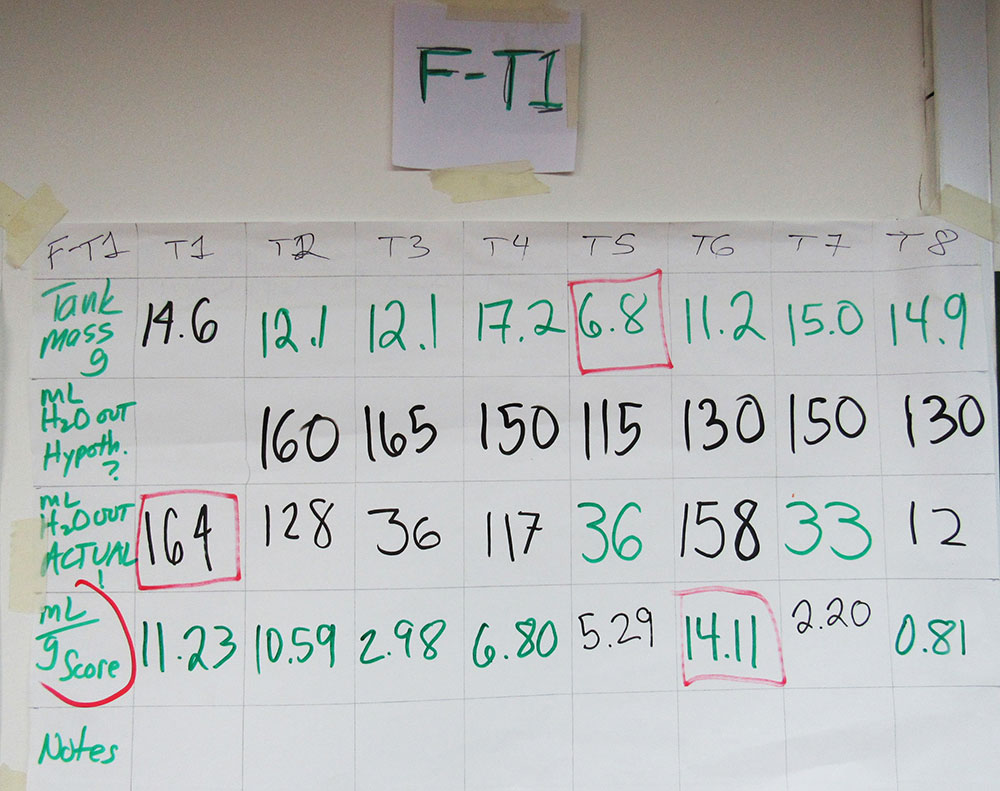
MYP Design Criteria A, B, C, and D
So far, I have briefly touched on some of the roles of different criteria in the MYP Design Cycle with regard to Water Tank Engineering. Before closing, here’s a more precise summary of the design process: The GRASPS set the stage for student research in Criterion A – Inquiring and Analyzing. The statement of inquiry was introduced here as well. With a foundation of research, students were ready to brainstorm and formalize their tank concepts in Criterion B – Developing Ideas.
In Criterion C – Creating the Solution, students worked in table groups to negotiate and build a final newspaper water tank design from their individual Criterion B ideas. Finally in Criterion D – Evaluating, students tested their tanks and determined success against the design specifications established in Criterion B. They then came up with ways to improve their designs if they were to engineer a water tank again.
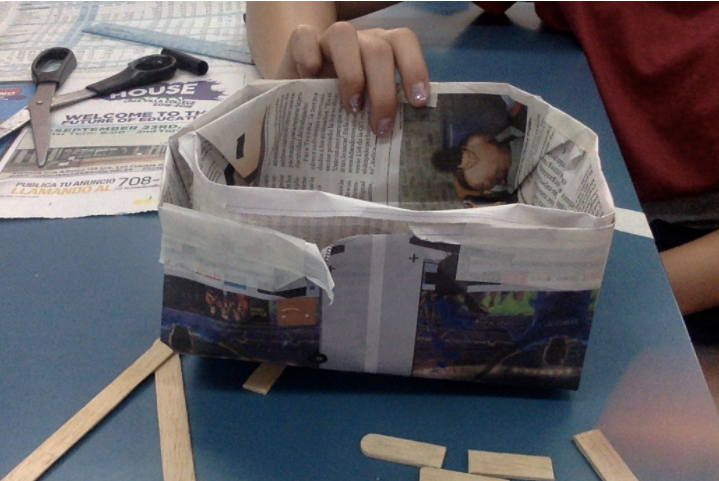
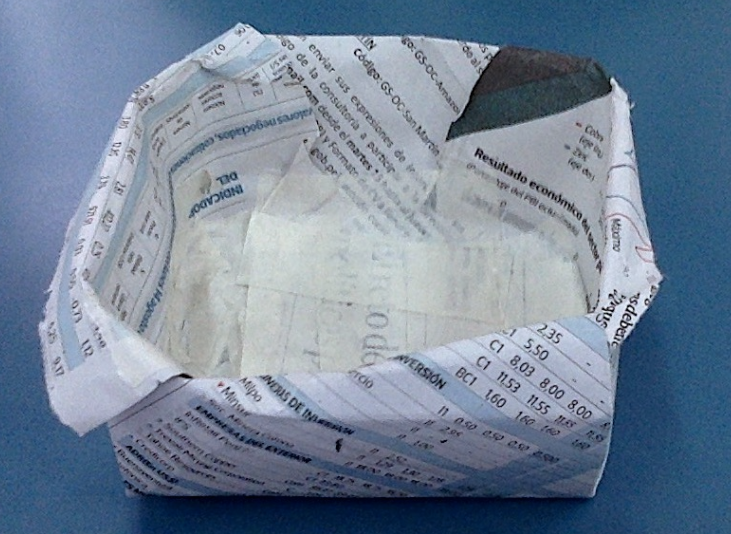
Water Tank Engineering from Newspaper – What’s Next?
At this point, one takeaway you might have is that the MYP Design Cycle has the power to explore almost any problem relevant to student learning. In this case with 11- and 12-year old students new to MYP Design, a simple concrete problem with a clear quantifiable goal made the most sense as an introduction to the process.
In the follow-up blog post about newspaper water tank engineering via the MYP Design Cycle, I showcase some of the different designs students created to meet the goal in the GRASPS. I also want to go over student perceptions of volume, STEM supplies to have on hand, and testing insights.
If you are interested in a more formal understanding of MYP Design, check out the sometimes difficult-to-find 62-page Middle Years Programme Design Guide for grades 6 to 10 (Years 1 to 5). It’s from 2014-15. I also put together two blog posts about MYP Design with an eye on specifically supporting grade 6 (Year 1) students: MYP Design Basics – One Perspective and MYP Design Assessment Criteria Modified.
Check out the Water Tank Engineering from Newspaper Part 2 blog post for the free lesson activities.
